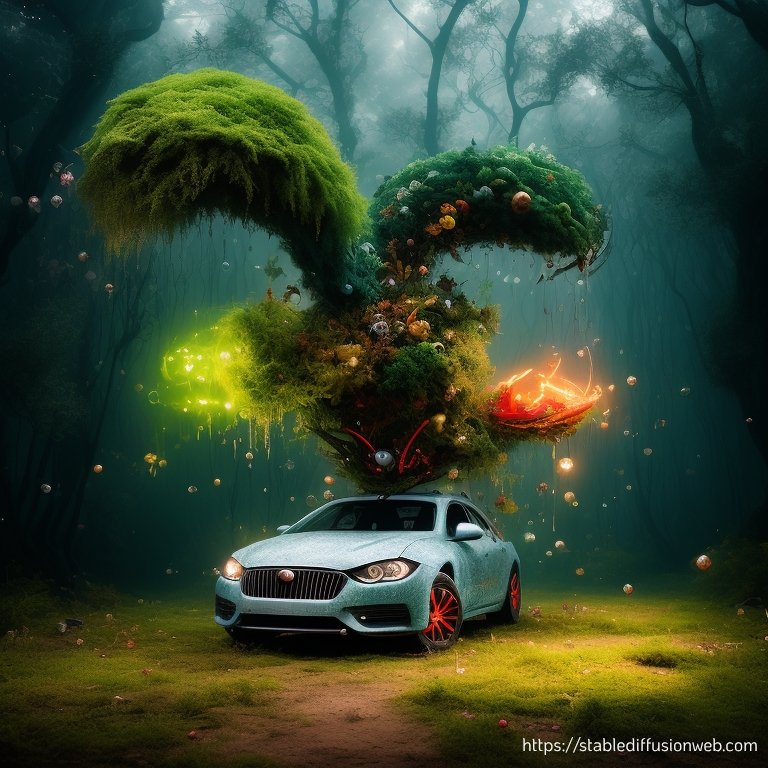The dexterities of generative AI applications, like Midjourney, DALL·E and stable diffusion enable users to explore vast multimedia spaces layered and powered by an equally vast amount of data (Epstein et al., 2023). Simultaneously, they have stimulated discourse in the arts, encouraging opposing opinions on whether such large language models bring about more benefits or drawbacks for creative workers. In 2016, Microsoft (2016) presented one of the first examples of what artificial intelligence could mean for the world of art – a machine learning algorithm trained on works by Rembrandt, that further generated a piece of art? I intentionally end my previous sentence with a question mark, hoping to further explore how the notion of aesthetics and style subsist in the world of computer-generated artistic pieces.
The team behind the new Rembrandt project referred to the generated piece as “(…) a visualization of data in a beautifully creative form” (Microsoft, 2016). However, a big shift has occurred since 2016. The images we generate through large language model driven tools now, unless specifically instructed to use a certain style, will suffer from aesthetic merging. Put simply, the style is either similar, or very much the same. And there is a good reason for that. The newer versions of AI generated art will never start with a tabula rasa, the synthetic content, rated by users, is already being utilized to train future models. This, in turns, creates what Epstein et al. (2023) refer to as a “(…) self-referential aesthetic flywheel that could perpetuate AI-driven cultural norms” (p. 6). This is something one can quickly observe by trialing one of the tools, something I set out to do. My idea was simple, I wanted stable diffusion to create a fictional creature, not bound by any sense or a priori knowledge, the prompt – evidently generated by my best friend ChatGPT – was as follows:
Generate an imaginative and unique image of a fantastical creature that defies preconceived notions of conventional objects. This creature should be a harmonious fusion of the following elements: the body of a car, a dog, a green stick, and a red circle. Let your creativity run wild and craft an image that transcends traditional boundaries and expectations.

I am in no way blown away by the results. In fact, it feels like something I have seen what now feels like one too many times before, as if I already knew the aesthetic that was going to meet me on the other side of my prompt. In a recent talk about the impact LLM has on art, Ph. D. candidate at the Trondheim Academy of Fine Arts, Martinus Suijkerbuijk referred to one of the major threats to the art industry as cultural Darwinism (M. Suijkerbuijk, personal communication, 26 September 2023). A notion referring to the nature of versioning in large language models and the existing aesthetics convergence, that in a way, imposes style on content. Creative expression and intention that is extenuated by the human process in traditional artforms, slowly fades away in a sea of synthetic images. However, as illustrated very well by my failed attempt to create a piece of art that could blend everyday objects into an abstract and unbound mélange, there are certain parts of my imagination that AI still cannot access and that I still cannot explain using natural language. Therefore, what remains the question for digital artists rather becomes is how they can exert artistic intention and their own notion of style into the creative process.
References:
Epstein, Z., Hertzmann, A., Herman, L., Mahari, R., Frank, M., Groh, M., Schroeder, H., Smith, A., Akten, M., Fjeld, J., Farid, H., Leach, N., Pentland, A. & Russakovsky, O. (2023). Art and the science of generative AI: A deeper dive.
Microsoft (2016, April 13). The Next Rembrandt. Retrieved September 29, 2023 from https://news.microsoft.com/europe/features/next-rembrandt/


Interesting read! I had only heard perspectives on the danger that generative AI poses on art, but it seems it (luckily?) has its limitations as well. I am wondering how the art-generation process of AI’s differs from the human variant. Since the models are tuned using human raters, could the style of AI art not evolve over time? There have always been dominant art styles in history, based on human taste. Maybe, if we democratize the labeling (judgement) of AI art more, it could evolve over time like human art does? I am curious what you think about that.
Very thought-provoking! Bringing notions of Darwinism into AI-generated worlds is a powerful parallel and underlines the need to vigilantly consider the outputs of AI to maintain diversity in the field. However, as you very effectively demonstrated, the landscape is slowly but surely already merging the same aesthetic – is that the survival of the fittest? Do you think it is possible to avoid this or ways for artists to leverage the tools without sacrificing their unique artistic voice? Or are the artists and artistic ideas of the future bound to follow the same degradation just by the proximity and influence of AI, without even explicitly using the tools?
Very interesting points! Clearly, generative AI applications have failed you in terms of imagination (or perhaps you believe that the AI’s lack of creativity makes it less dangerous), and I’m curious whether you believe that the AI’s lack of imagination can be compensated for through technological advancement. AI is thought to be close to the truth in the field of Go; however, is it possible that art itself seeks infinity and expression rather than truth, rendering human creativity irreplaceable? And, in the future, what do you believe will be the most effective use of AI in art?